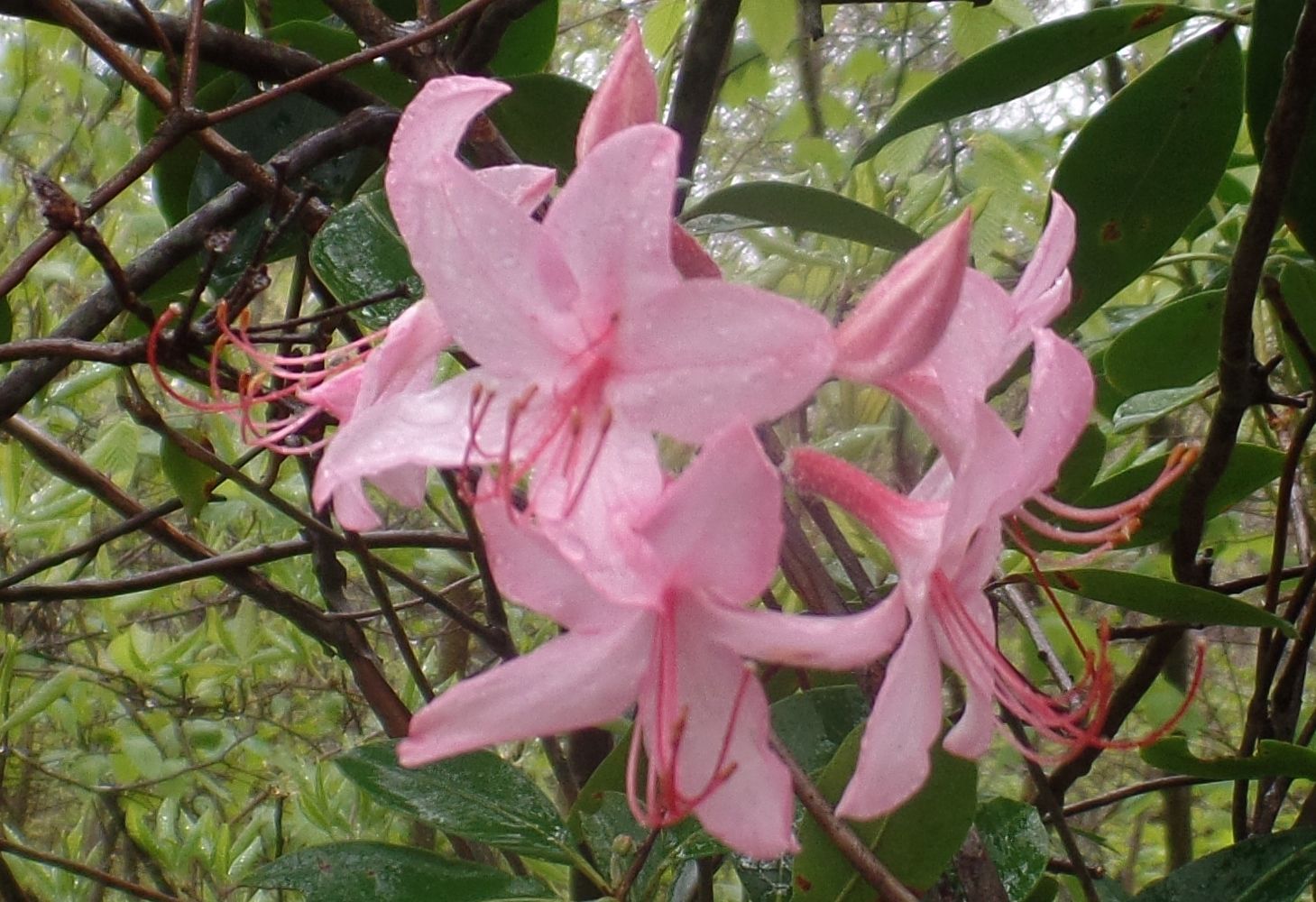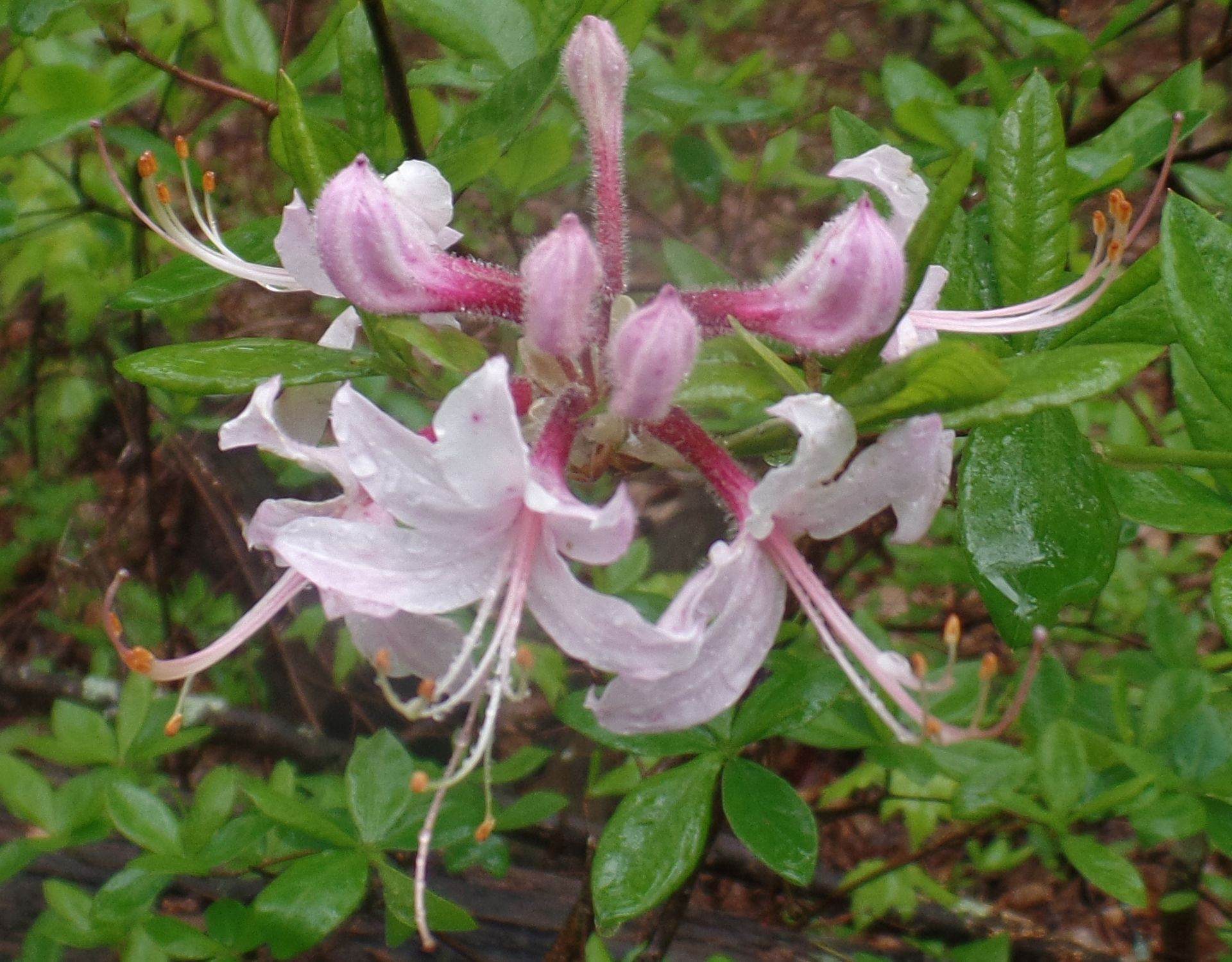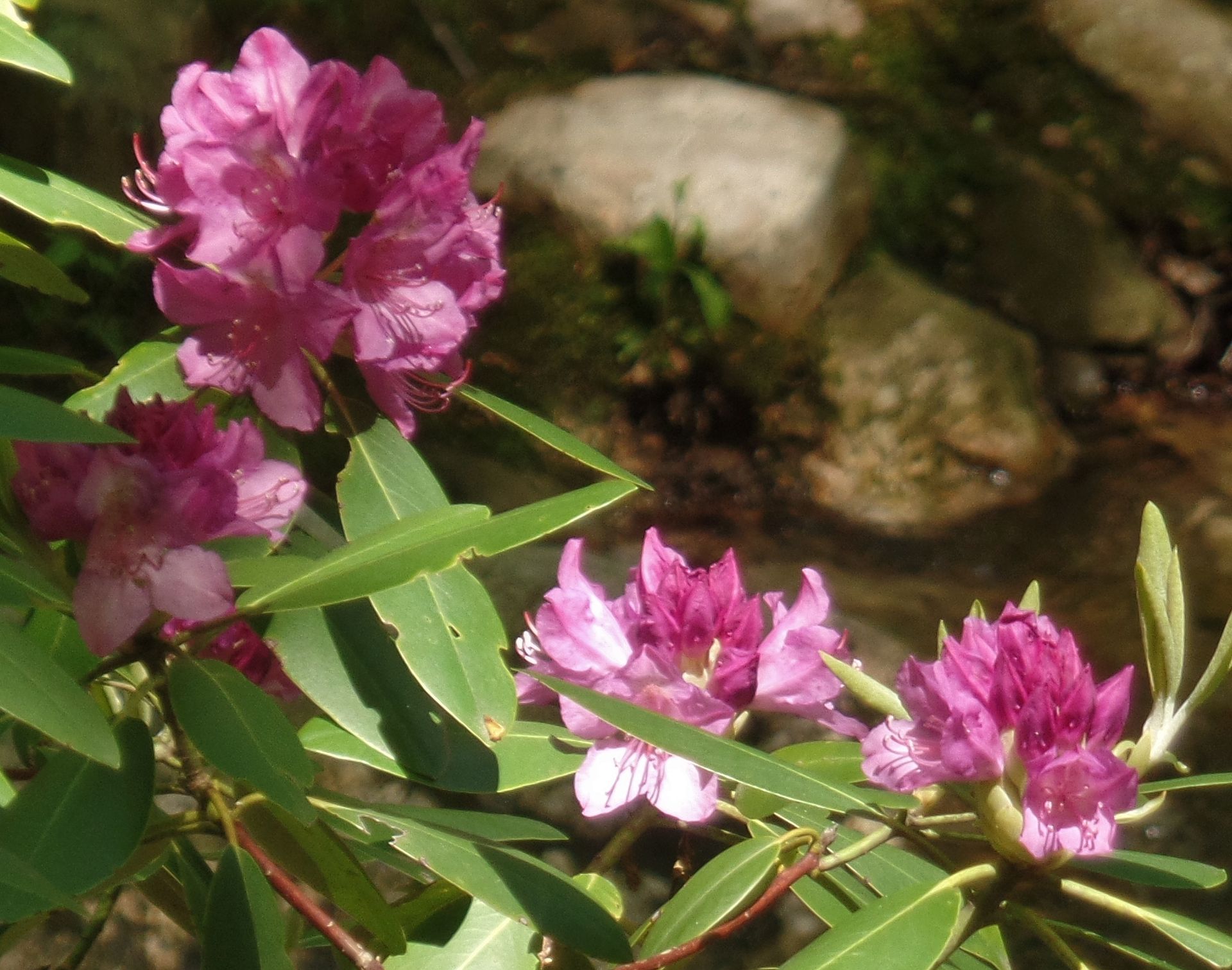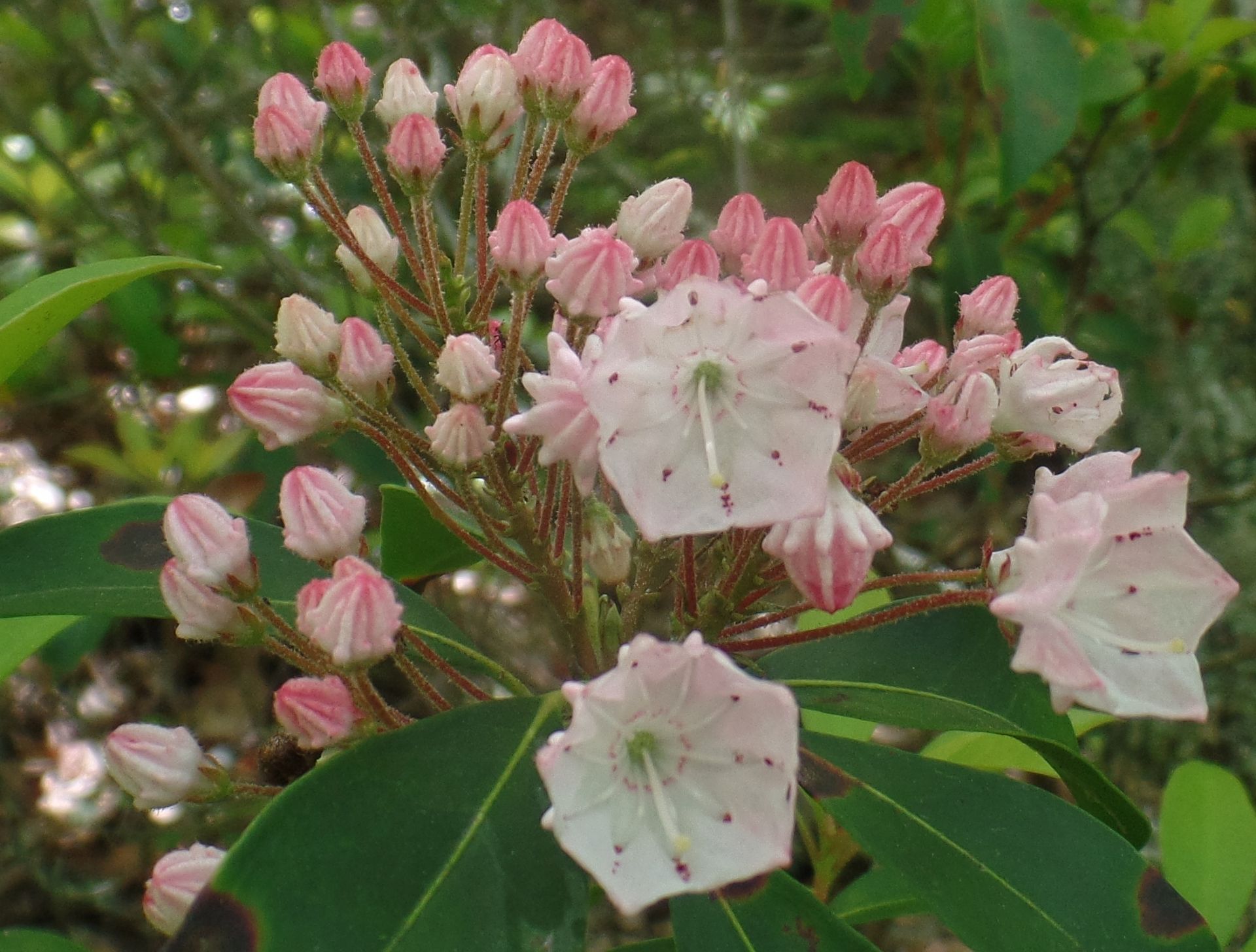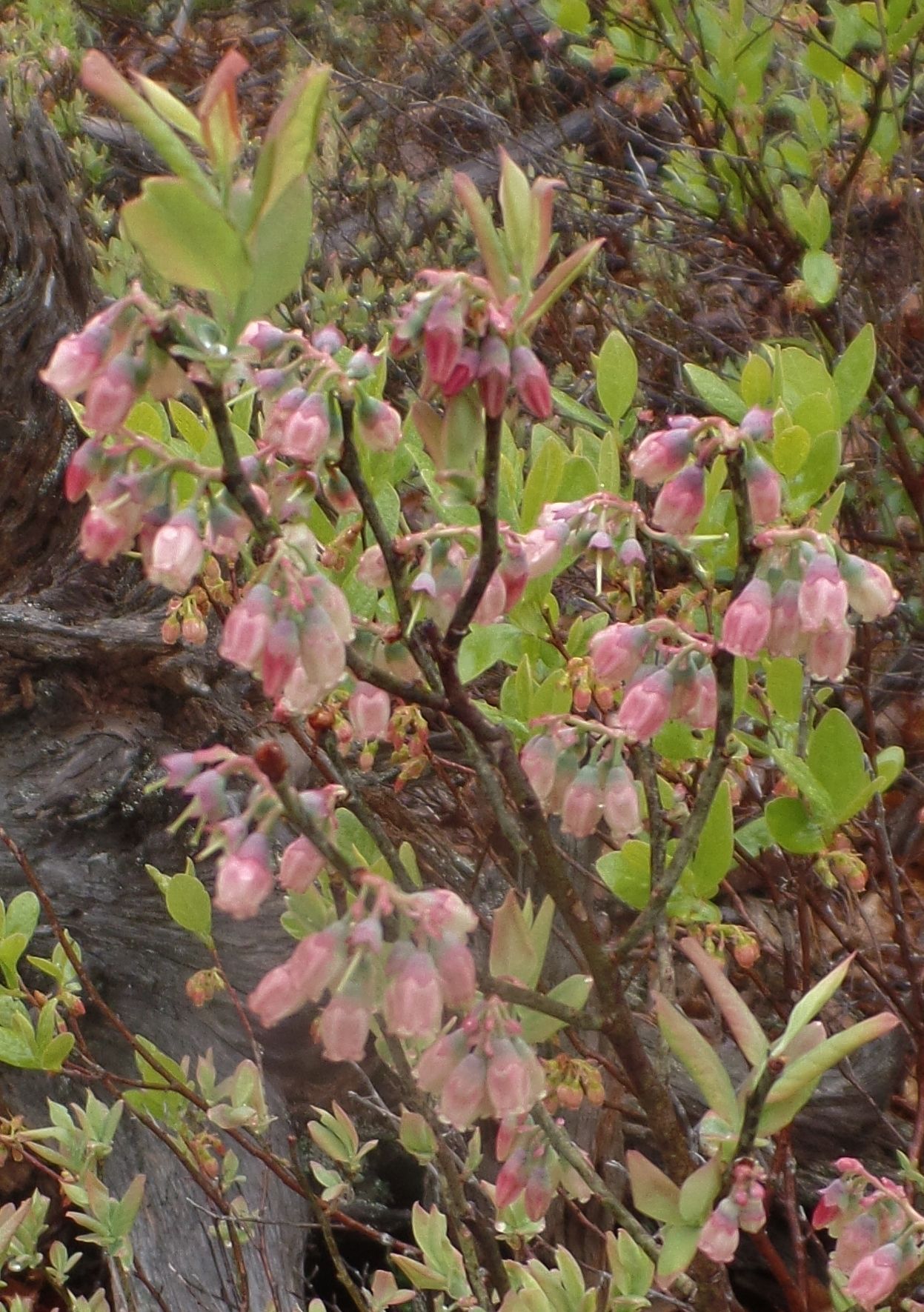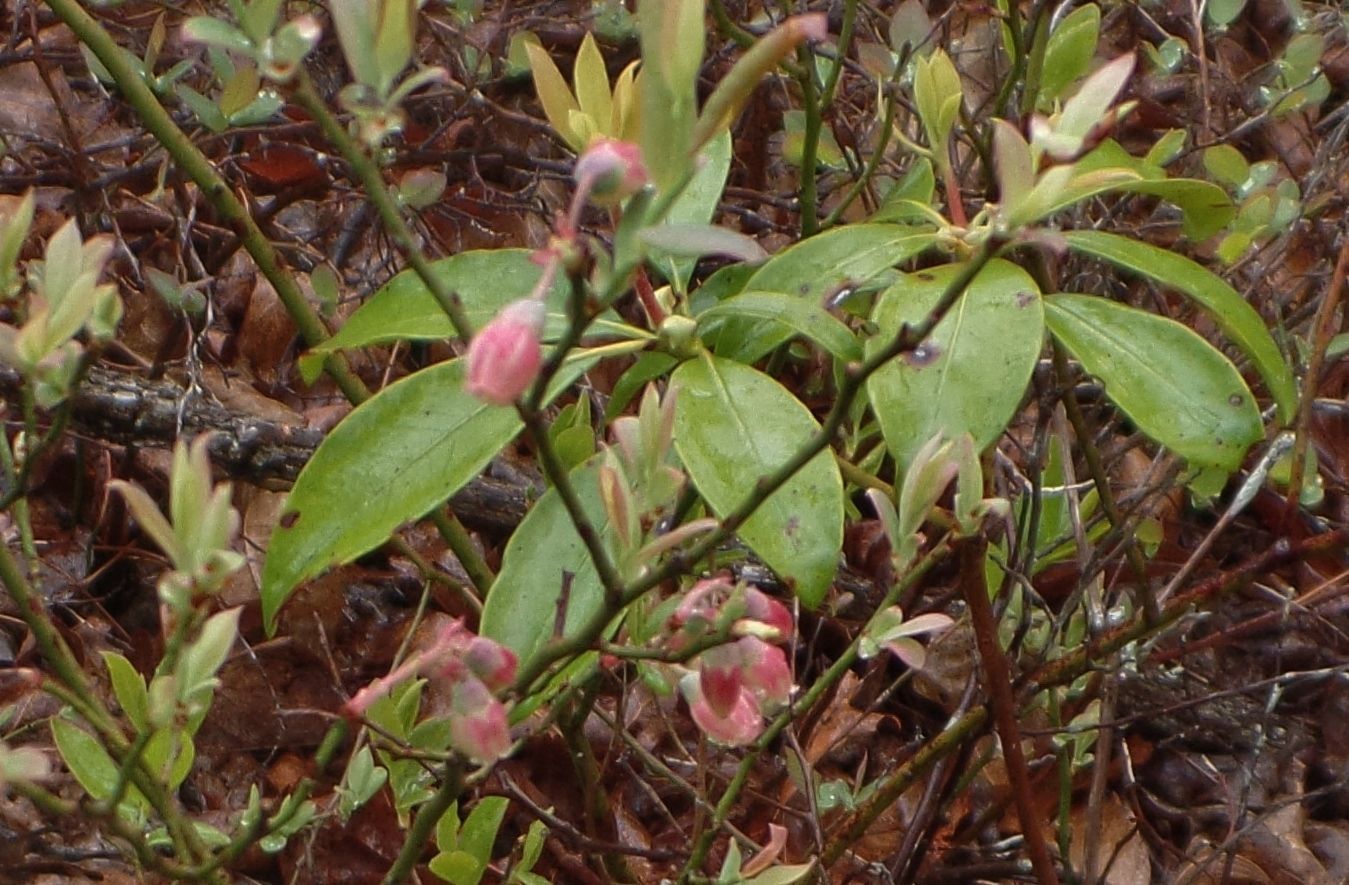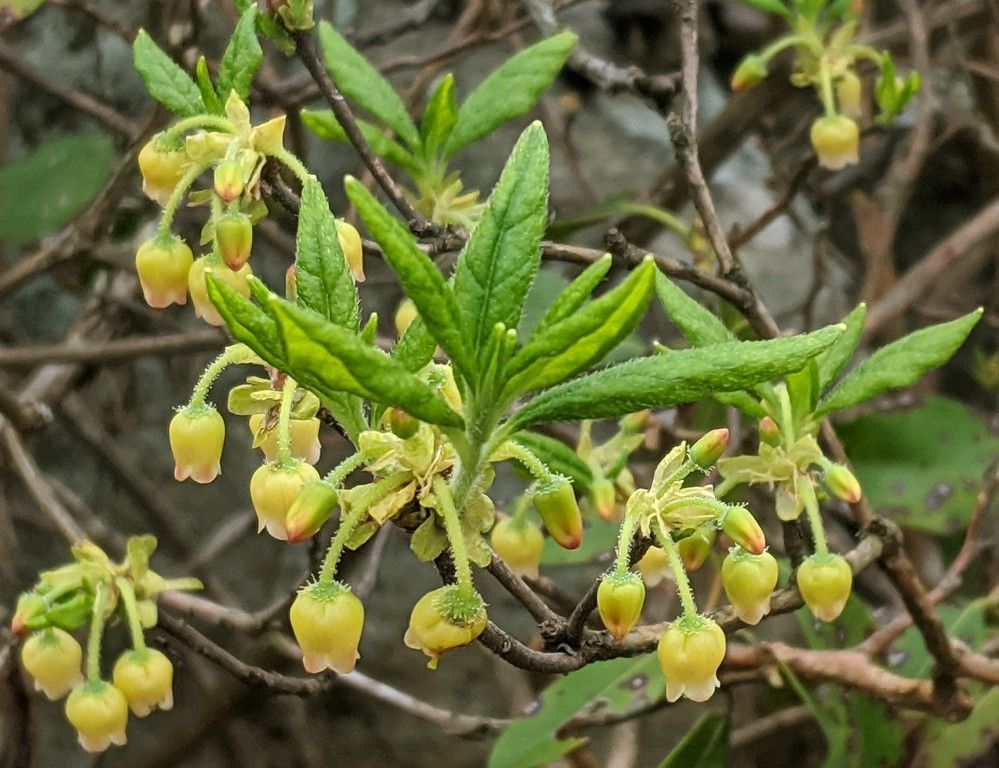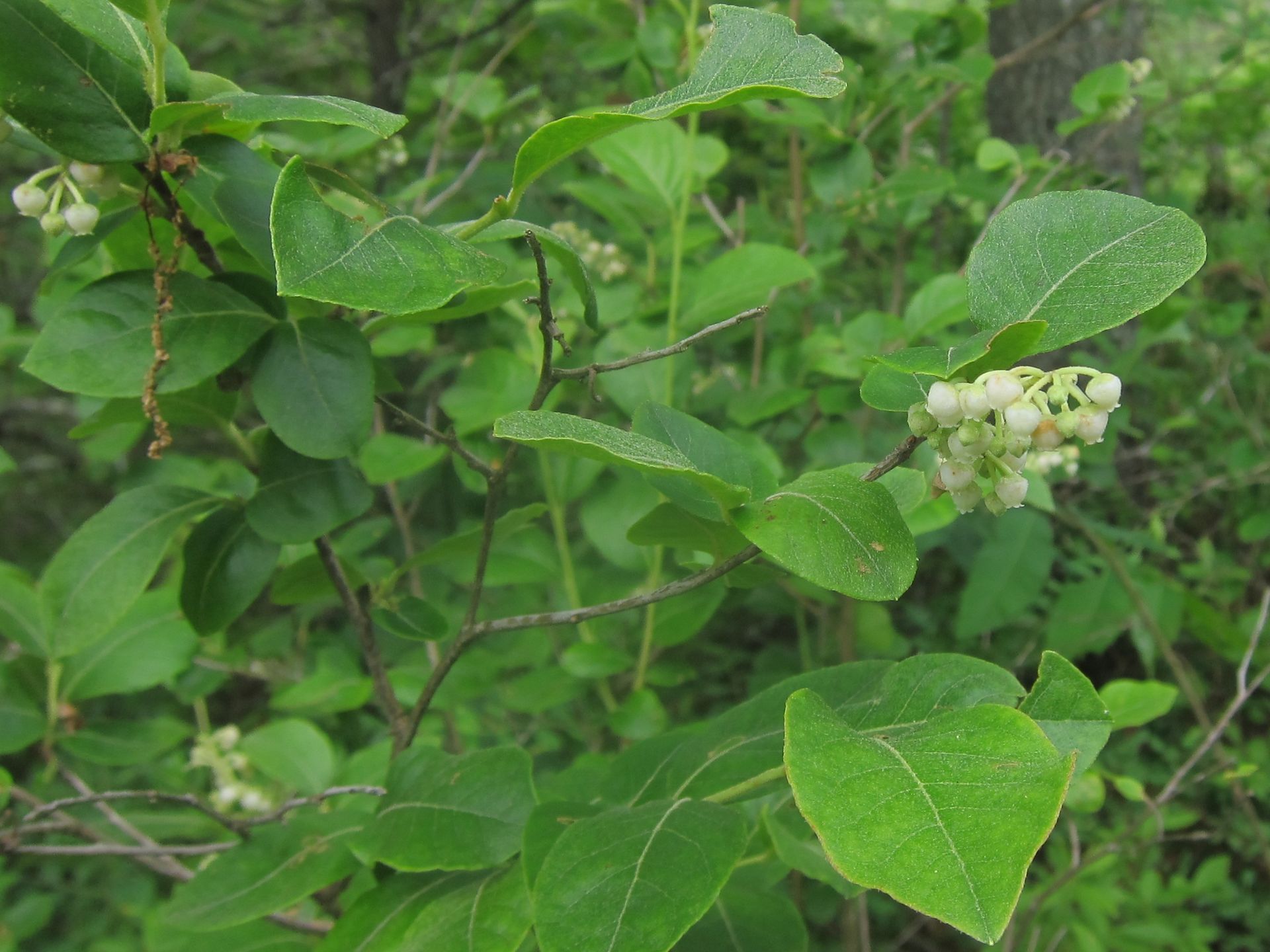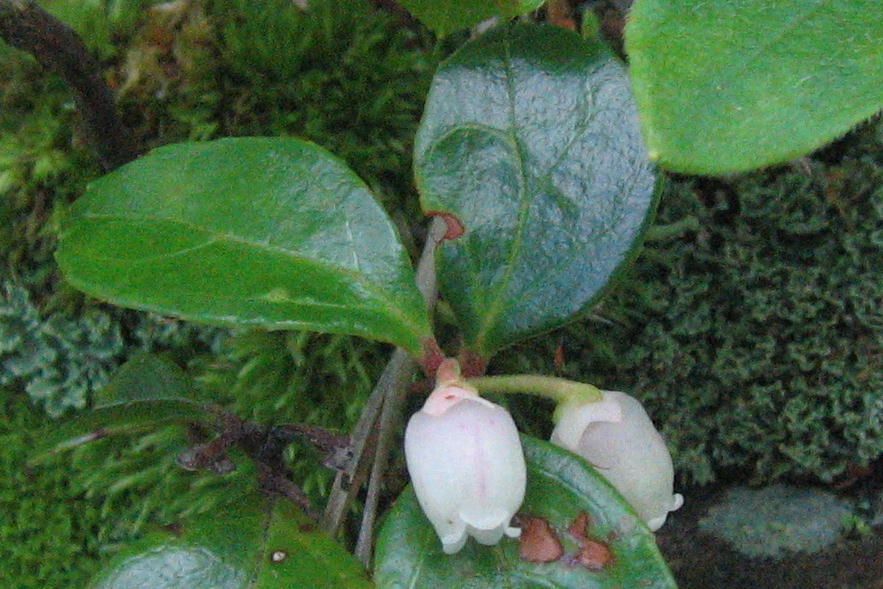What's that Flower: Riprap Hollow
By Richard Stromberg
The Riprap Hollow hike is described on pages 108-111 of PATC’s “Circuit Hikes in Shenandoah National Park.” The hike starts at mile marker 90 of Skyline Drive. The circuit uses Riprap Hollow, Wildcat Ridge, and the AT. The circuit puts on a fantastic floral show in late spring.
The entire circuit is over Quartzite/Sandstone rocks, making the soil acidic and low in nutrients. So, the understory is dominated by Heath Family plants, notably Rhododendrons/Azaleas, Mountain Laurel, and Blueberries/Huckleberries. Look for them throughout your hike.
Two Azalea species grow all along these trails: Early/Mountain Azalea (Rhododendron prinophyllum) and Wild Azalea/Pinxterflower (R. periclemenoides). The flowers of the two species are very similar: pink to white, flaring petals opening from a reddish tube, with long stamens protruding and curling upward. Botanists distinguish the two by the hair on the back of the leaves. Mountain Azalea is hairy all over, while Wild Azalea has hairs only on the main vein and along the edges. The main difference is odor. You can smell the perfume of Mountain Azalea before seeing it; while Wild Azalea has little odor.
Look for Catawba Rhododendron/Mountain Rosebay (R. catawbiense) at the bottom of the circuit around the junction of Wildcat Ridge and Riprap Hollow Trails. It has clusters of five-petaled, pink-to-purple, two-inch flowers on two-foot-tall bushes. The inside of the top petal is speckled with green spots.
Mountain Laurel (Kalmia latifolia) bushes are up to 10 feet tall with evergreen leaves thinner and smaller than Rhododendrons, no more than four inches long. The petals are fused and open like a saucer, usually white, but sometimes pink inside. From inside a red ring in the middle of the saucer, the pistil points straight out while 10 white stamens bend their anthers into red-spotted pockets inside the petals. When a pollinator lands in the Mountain Laurel flower, the anthers spring from their pockets to shower it with pollen. The pointed flower buds have ridges radiating from the tip back to each anther pocket.
Huckleberries are the genus Gaylussacia and Blueberries are Vaccinium. Huckleberry twigs are generally brown, while Blueberriy twigs are green. Huckleberry seeds have a hard covering, so when you eat a Huckleberry, you detect the seeds like little bits of grit. You do not notice the seeds in a Blueberry. Both genera are shrubs. The petals of most of the species are joined and contracted near the mouth where five points flare out. The flowers vary from red to pink to white. Deerberry (Vaccinium stamineum) is an exception. Its white flowers dangle like other species, but are wide open with protruding stamens. Deerberries fruits are larger than the non-cultivated Blueberries, stay green, and are not edible. Black Huckleberry (Gaylussacia baccata) is the only common Huckleberry in our area. Northern Lowbush Blueberry (V. angustifolium) and Early Lowbush Blueberry (V. pallidum) are the common Blueberry species.
Minniebush (Menziesia Pilosa) plants and flowers look like Blueberries. The dangling flowers are white with red/brown at the tips. The fruit are hard and brown. The tiny tip at the end of each leaf is white.
Maleberry (Lyonia ligustrina) bushes also look like Blueberry bushes. The white flowers are similar, too, though they are more globe-like. The fruit is hard and brown.
Teaberry/Wintergreen (Gaultheria procumbens) is never more than a few inches tall. A plant has a few pendulous, white flowers. Like Blueberries, the petals are joined and contracted near the mouth where five points flare out. A berry turns red in late fall.
To be continued next month

